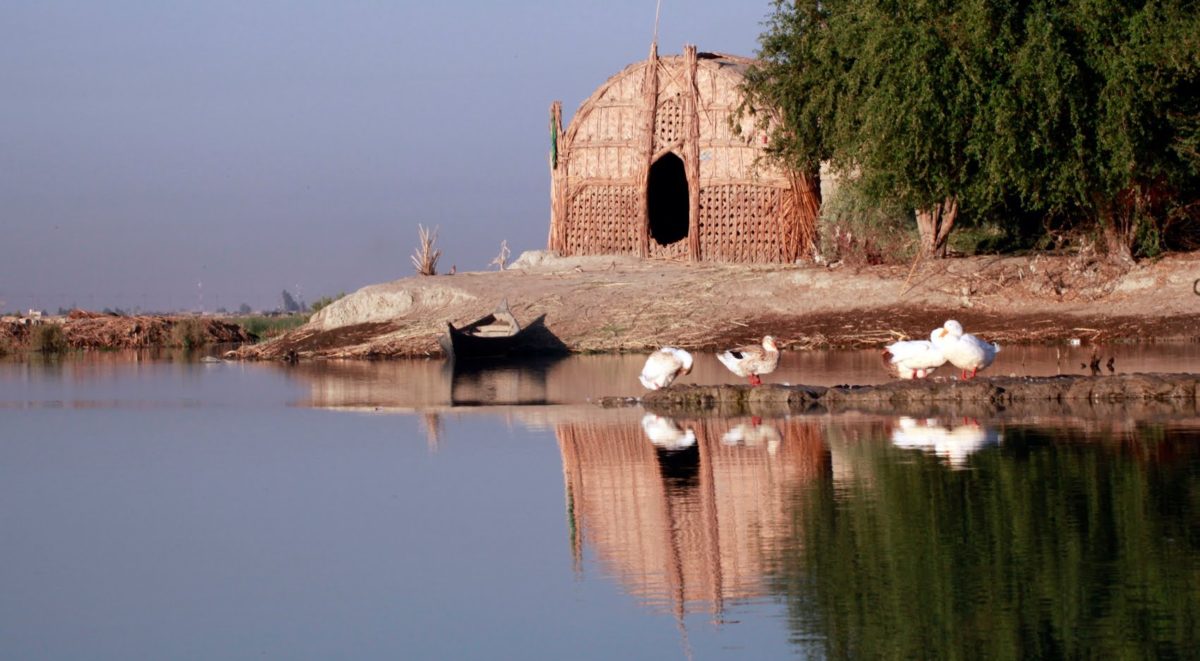
In the Marshlands,
‘Another Face of Iraq’
After 18 months covering the battle against Islamic State fighters in northern Iraq, Emilienne Malfatto felt compelled to show a less-violent side of the war-torn nation. And she found one in Chibayish, a small district in the Mesopotamian marshes.
“When you say ‘Iraq,’ people just think war: the two wars in Baghdad or bombings,” Ms. Malfatto said. “But you also have this beautiful place with beautiful people. It’s like another face of Iraq.”
The marshlands, comprising a nearly 8,000-square-mile area, are at the junction of the Tigris and Euphrates Rivers. Their denizens, the Ma’dan — also known as the Marsh Arabs — live free from threats posed elsewhere by ISIS and militias.
She had first journeyed to Chibayish in late 2016, going alone to develop rapport and trust with members of the community. She benefited both from her command of the language and by being female. Women were quick to embrace and engage her, Ms. Malfatto said, explaining that a male stranger would not elicit that same quick trust or openness.
“People were really willing to open up,” said Ms. Malfatto, who extolled the Ma’dan’s remarkable hospitality. She forged strong bonds with several families who offered shelter in their reed houses, provided food and arranged boat rides into the marshes, which she described as having a mythical quality. She also made sure to be respectful of their conservative customs.
“I am absolutely not a religious person, and I am quite fascinated by faith as an object of study,” she said. In particular, she was struck by the levity that accompanied daily prayer, and by the way such worship was integrated into everyday moments. She hopes her portrayal of Muslims will be a counterbalance to the current stigmatization of Islam in political debate and the media.
The families gave Ms. Malfatto intimate access to everyday life in the marshes, including a family eating a breakfast of fresh buffalo milk, sugary tea and homemade bread; boat drivers piloting along murky waters; and portraits of Ma’dan women with well-worn faces and hands.
The last few decades have brought changes to the Iraqi marshlands. Once, they had been a tourist destination, home to a variety of wildlife. But in the 1990s, Saddam Hussein drained the marshlands in an attempt to flush out Shiite rebels who had fled there after the Persian Gulf war of 1991.
After U.S. forces toppled Hussein’s regime in 2003, the Ma’dan returned to the marshes, destroying the dams and dikes that had been constructed. Water again flowed through the area, once more allowing vegetation and livestock to thrive.
However, threats to the marshlands remain, a result of climate change and dam construction on the rivers. Rising temperatures have led to large amounts of water evaporation. Construction of newer dams upriver in Turkey, where the headwaters of the Tigris and the Euphrates are located, has also reduced the rivers’ flow.
Twice in the last 10 years — in 2008 and in 2015 — those conditions led to the marshes nearly vanishing. It’s likely they will dry up yet again, perhaps this time for good. And though Iraq is still grappling with ISIS and war recovery, Ms. Malfatto hopes that the threat to the Ma’dan and their livelihood will not go ignored.
“Iraq has other problems,” she said. “Maybe they think they have more important stuff to deal with. On the other hand, they cannot let this part of the country die.”
Read original article @ lens.blogs.nytimes.com